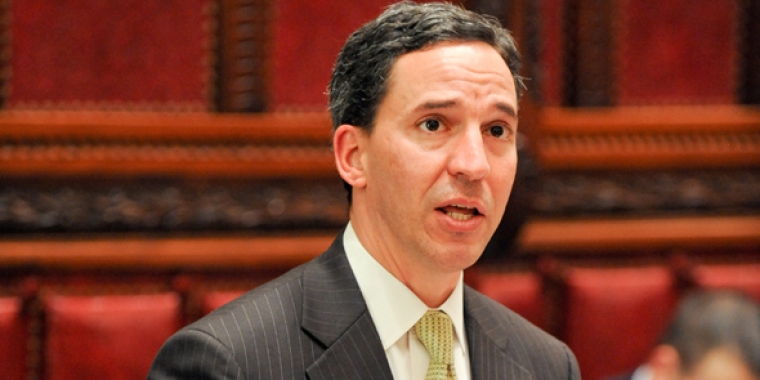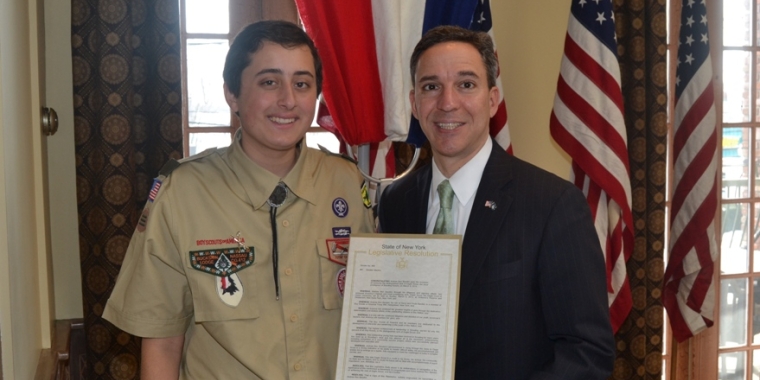From the Desk of Senator Jack M. Martins
Jack M. Martins
May 17, 2011
-
ISSUE:
- Local Government
-
COMMITTEE:
- Local Government

In just a few months in Albany, we have made considerable progress in getting New York State back on track. When the Assembly, Senate and Governor have worked together toward a common goal, we have seen that we are capable of making significant improvements in our State. This was the case in March when the Senate worked with the Governor on a state budget. Not only was this highly complex and contentious process completed on time, but more significantly, it represented a change from past practices that have repeatedly failed the residents of New York. We were able to successfully balance the State budget and close a $10 billion deficit while not raising any taxes or fees.
On the local level, when it became apparent that villages would have to incur the financial hardship of securing scanner machines for local elections, I worked across the aisle with my colleague, Assemblywoman Michelle Schimel, to pass legislation that allowed villages to continue the use of lever machines through 2012. With the cooperation of both legislative houses and the Governor, this legislation was quickly passed and signed into law in time for the village elections in March.
I am continuing to work with Assemblywoman Schimel to pass legislation that would offer school districts relief from a state mandate requiring a seat for every bus-eligible student, without regard to how many of those eligible students actually take the bus. This often results in sparsely seated buses. Allowing individual districts to conform this service to more closely reflect their actual seating requirements can save school districts money, translating into savings for our taxpayers.
I also sponsored a bill in the Senate amending the existing Citizens Empowerment Act so that a local government that has started down the path of dissolution would be required to provide its residents with sufficient information regarding the planned consolidation, on which they would have the opportunity to render an informed vote. I believe it is imperative that an informed electorate know whether the proposed consolidation may result in the intended savings before committing to proceed blindly toward dissolution without that information. Assemblywoman Schimel is sponsoring a companion bill in the Assembly.
Another issue on which I believe we can all work together to craft a solution is the MTA payroll tax. In 2009, despite fare increases and service cuts, the MTA continued to find itself in need of even more cash. This is an unfortunate recurring theme with the MTA. Revenues never seem to catch up to expenses. To address this apparent shortfall, the legislature, at the time, imposed a 0.34 percent tax on payroll on all businesses, not-for-profits, hospitals, religious institutions, governments and schools to be directed to the MTA.
Had I been a member of the Senate in 2009 when this tax was enacted, I would most certainly have voted against this additional tax burden. Creating additional layers of taxation on small businesses that are already struggling through a difficult economic period, as well as municipalities and school districts, which ultimately have to pass the tax onto taxpayers, should have been avoided. Yet, it was typical of our state government at the time and in keeping with its long-accepted philosophy of simply increasing taxation to meet rising expenditures, at a time when New York State’s taxpayers were most in need of relief.
Now that the MTA payroll tax is in effect, our legislative and executive branches should focus their recent cooperative efforts on phasing out this tax. The Governor currently enjoys a unique position of influence and his efforts in this regard would go a long way toward ridding the state of this unduly burdensome tax.
I refuse to believe that simply channeling more money to the MTA is the answer. It doesn’t appear to have worked in the past and it is equally unlikely to accomplish the required result now. The MTA’s finances should be independently examined to seek greater efficiencies and cut expenses. Just like the rest of us have had to do in our own households and businesses.
What does it say about an organization that employs approximately 66,000 people, over 10,000 of which are managers or supervisors? Not to mention the well known overtime abuses and pension-padding that have run out of control, or the fact that the MTA has over $50 billion in real estate holdings.
We are all in this together and it is incumbent upon us to provide relief to our taxpayers while ensuring that our commuters are not consequently impacted. It all starts with a forensic audit to re-evaluate the MTA’s spending priorities and refocus its attention on its core purpose of moving people affordably. I am looking forward to working with my colleagues on both sides of aisle and the Governor to implement the changes necessary to ensure that the MTA lives up to its original mandate.
As always, thank you for the opportunity to serve
Share this Article or Press Release
Newsroom
Go to Newsroom
